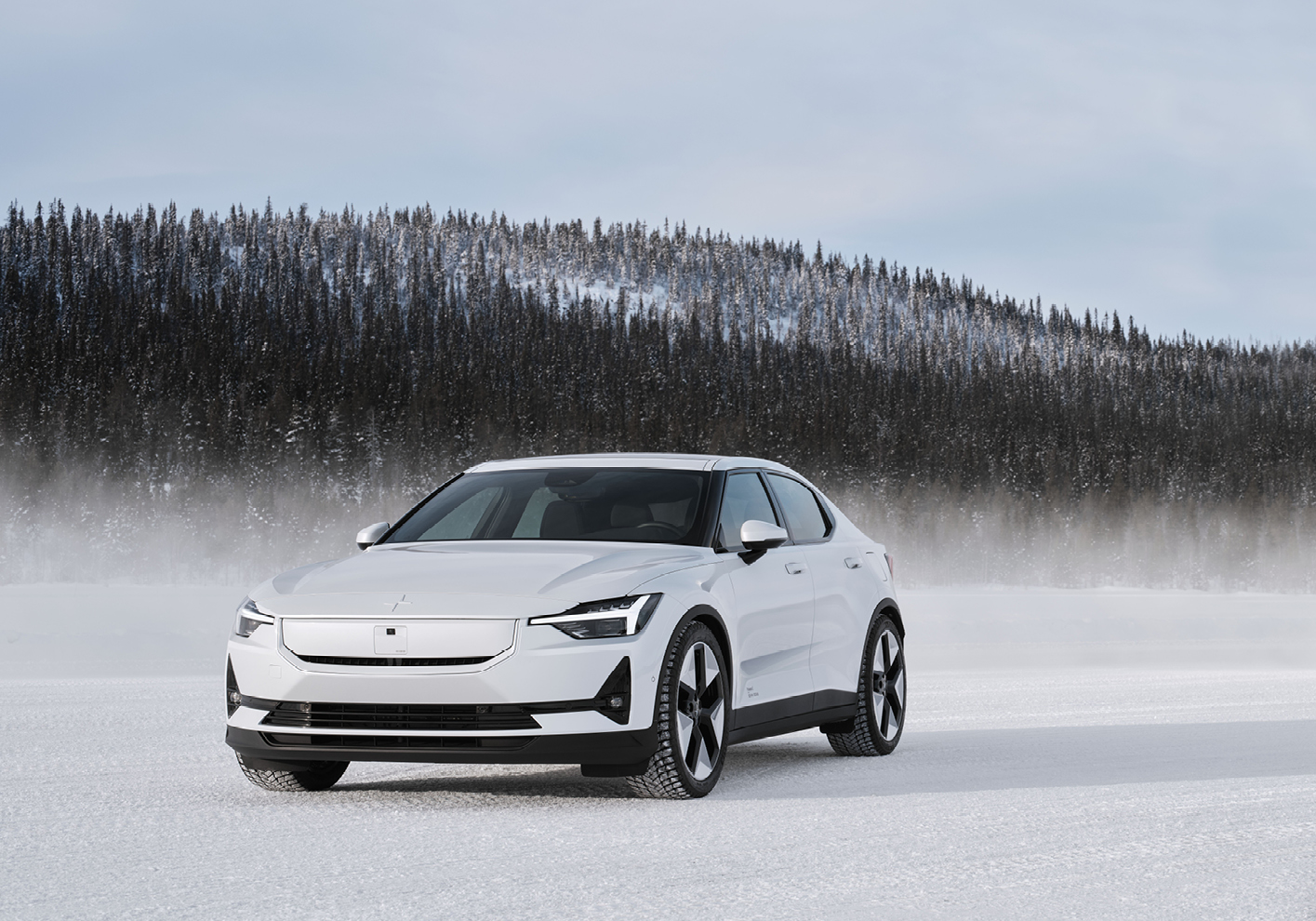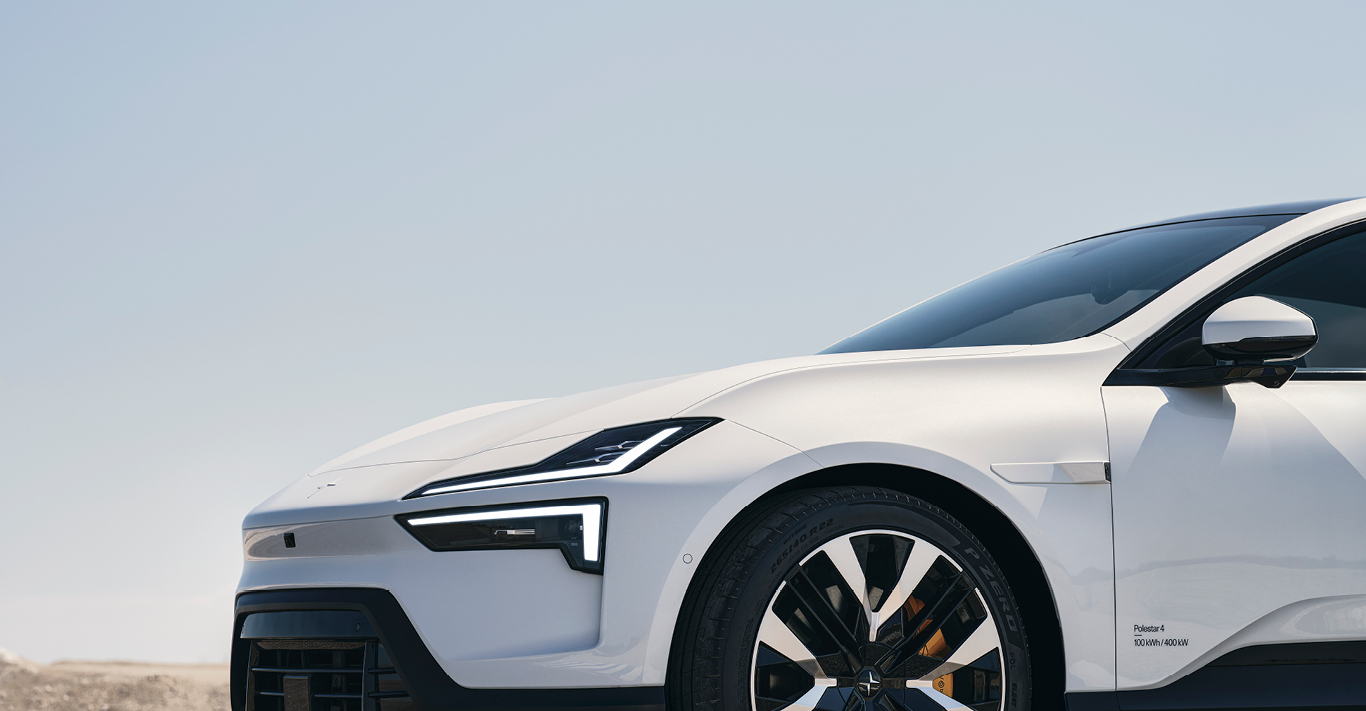WORDS
David Green
Polestar has come a long way since it was a car-tuning company that prepped Volvos for racing, despite the thought of racing Volvos being somewhat of an oxymoron. The company can trace its history back to the 1990s when it was called Flash Engineering in honour of driver Jan “Flash” Nilsson, and it won the inaugural Swedish Touring Car Championship in one of the block-sided Volvo 850 Super Touring cars. Fast-forward a couple of decades and the renamed Polestar Performance had evolved into tuning Volvo production cars before being snapped up and brought in-house by the Swedish automotive company in 2015.
Things then took a noticeable turn. In 2017, Volvo, with majority owner Geely, let Polestar spread its wings as a standalone builder of cars. Its brief was to be a maker of all-electric vehicles with all the allure of a Scandi noir thriller.
The architect of the Polestar look is head of design Maximilian Missoni. Telltale signs in the cars’ design give away the fact that this is a brand spawned by Volvo, including the Thor’s hammer headlights and yellow seatbelts, coloured to remind you that performance is incomplete without safety, which is the underlying Volvo trait. The connection is not just skin deep – Polestar owners can take advantage of the Volvo Car group’s global network of service points, which is quite an extra for a start-up car brand and a factor that will give consumers comfort when it comes to signing on the dotted line.
Tesla was the original cult “zero emissions” car brand, but while it has expanded into a multibillion-dollar behemoth, the ubiquity of its cars has opened up the opportunity for another company to be the cool electric brand and it seems that Polestar is claiming some of that ground. Polestar may be an offshoot of Volvo, but in some ways it feels as if it has picked up the mantle where Saab left off. Sadly, the “other” famous Swedish brand went bankrupt over a decade ago, but its cars had their own character. It was known as the architects’ car maker; the marque for the thoughtful driver in a cashmere rollneck. You feel that potential Saab buyers may now be attracted to Polestar.

The Polestar 4 is the brand’s latest model. It continues the company theme, but has its own surprises, namely the lack of a rear window. Although that doesn’t sound like a big deal, it is a major change that has made global news. We are used to not having rear windows in vans and trucks, but this will be the first time a production car hasn’t had one. It’s mainly due to Maximilian Missoni’s faith in the competence of digital cameras that not only give a wider field of view, unencumbered by kids or luggage, but also a clearer view in low light, where the camera technology can enhance the light conditions. Nonetheless, this is a hugely bold move, and you can imagine some nervous twitches from the marketing department when Missoni suggested they scrap an aspect of the car that has always been there. It probably helps that the CEO of Polestar is Thomas Ingenlath, himself a former SVP of design at Volvo. A CEO of a car company who was a former design head is unusual, but seems to be paying dividends at Polestar.
On the car’s inside, that Polestar serenity is there, with soft tech panels and light colours that create a calm, relaxing cabin. A landscape touchscreen dominates the dashboard. While some older, more established car brands struggle to come to terms with the switch to electric, Polestar is confidently plotting its own path – and not simply with the powertrain. An electric motor is a monumental change after decades of internal combustion engines, but it could be the touchscreen that defines this new age of motoring, as it is the physical feature that we interact with. It’s fair to say some of the older brands have handled this a little clumsily, but Polestar is aware that the touchscreen is incredibly important to the driver’s (and passengers’) interaction with the car. Its software is powered by Google in the West, but the company is developing a secondary system for Asia, where it is even working on a compatible phone. It is easy to see how these two components of the modern world could be seamlessly linked, and you wouldn’t bet against Polestar being the one to do that successfully.
Sustainability is also high on the Polestar checklist. It goes about this diligently and creatively, via such things as using ECONYL – which is derived from reclaimed nylon fishing nets – for the floor carpets; and Polestar 4 has the smallest carbon footprint of its models so far. This will be important to buyers, but most will take this for granted and trust that Polestar is doing everything possible in this area when they buy into the brand.
Polestar 4 is produced by a company still in its infancy, but there are signs of maturity growing from every model it brings out. The dictionary definition of a polestar is ‘a directing principle’ or ‘a centre of attraction’. This aptly named car company has a bright future.





